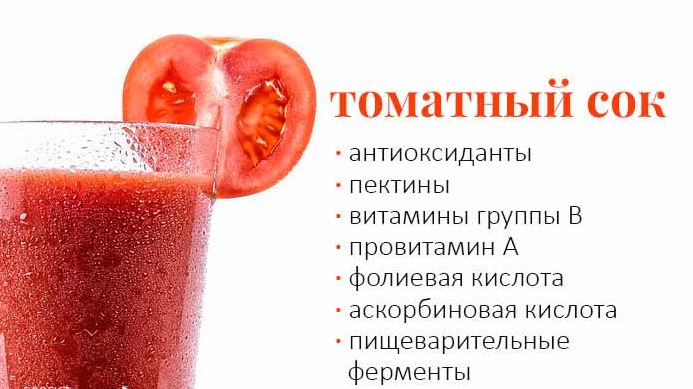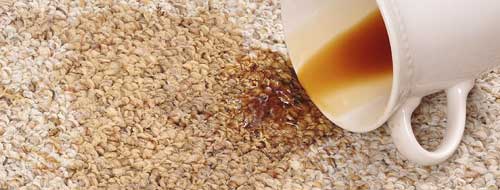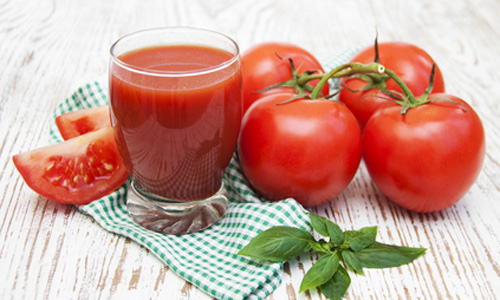What are the degrees of intoxication per ppm? The degree of intoxication.
Simple intoxication is divided according to the criterion of severity into three degrees: mild, moderate and severe.
The total clinical assessment of the state of the intoxicated is determined by the same two main effects of alcohol: psychotropic and toxic. In intoxication, the polar groups of symptoms are naturally intertwined. Euphoria and activity are replaced by inhibition and increasing stunning. Psychomotor agitation, in turn, goes into slow, poorly coordinated movements and complete adynamy.
An additional criterion for assessing the severity of intoxication may be the level of alcohol concentration in the blood. But you should immediately make a reservation that the severity of the clinical manifestations of intoxication and the magnitude of the concentration of alcohol in the blood do not always correlate. The relationships here have a temporal scatter, depending on individual characteristics, in particular, on the operation of a number of enzymatic systems. The severity of the clinical manifestations of intoxication also depends on the concentration and amount of alcohol taken, the functional state of the drinker, the nature of the food, the conditions in which alcohol is taken.
Fig. 4. Estimated correlation between the degree of intoxication and the alcohol content in the blood
A mild degree of intoxication (Fig. 4) is characterized by the predominance of the psychotropic effect of alcohol over the toxic. Usually a mild degree of intoxication corresponds to a blood alcohol concentration in the range of 0.5-1.5%. Signs of alcohol poisoning of the central nervous system are subtle. There is a decrease in the accuracy of small movements, an increase in the percentage of errors when performing any types of activity that requires attention and concentration. The time of perception is lengthening. Attention is easily distracted, superficial. The critical attitude towards oneself and the surrounding situation is reduced. Speech articulation may be slightly impaired.
The psychotropic effects of alcohol in a mild degree of intoxication are reduced to experiences of a state of mental comfort. Often it is accompanied by the effect of non-specific stimulation. The mood is often increased, there is euphoria. Intoxicated, animated, behavior is expressive. Often there is a disinhibition of drives (food, sexual).
In a drunken person, reddening of the skin, an increase in blood pressure, increased heart rate, sweating and other changes on the part of the autonomic nervous system are usually noted.
The duration of intoxication of mild degree varies widely - from several minutes to an hour or more. Following this, as a rule, there is a certain decline in mood, lethargy, and slight motor retardation.
It is generally accepted that the peak of positively stained psychotropic effects of alcohol falls on the resorptive phase (Balyakin, 1962). When absorption ends and the removal of alcohol from the body begins, the mental experiences associated with intoxication gradually fade. However, there is no clear parallelism, since the so-called elimination phase is determined by the decrease in the concentration of alcohol in the blood. At the same time, its concentration in organs and tissues, in particular in the brain, remains high for a long time, which contributes to psychotropic effects.
The average degree of simple alcoholic intoxication is already a more complex picture, based on a combination of the components of the toxic and psychotropic effects of alcohol. First of all, there is an increase in the proportion of symptoms of central nervous system poisoning in the clinical picture of intoxication. And the psychotropic effect of alcohol is becoming less regulated. The average degree of intoxication often develops with a content of 1.5-2.5% alcohol in the blood. The speech of the intoxicated is blurred, often slowed down, the selection of words is difficult. Violations of coordination of movements are noted: small, precise movements are impossible, the handwriting is upset. The gait becomes shaky, uncertain, the movements are impetuous and sweeping.
Mental experiences lose their integrity. Orientation in the situation is also partially disturbed. Perception of external events is difficult, associative processes are upset. Self-esteem rises, critical attitude to one’s state and behavior sharply decreases. Behavior itself is becoming increasingly impulsive, sometimes inadequate.
Typical mood swings, euphoria is easily replaced by discontent, irritability, resentment. Depressed colored experiences appear which can be replaced by euphoria.
Intoxication often ends with sleep. A series of intoxication events (usually final episodes) can be forgotten (amnesized). Upon awakening, a marked post-toxic state with reduced working capacity is noted.
The severe degree of simple intoxication is characterized by the predominance in the clinical picture of the toxic effects of alcohol and the phenomena of depression of the central nervous system. Blood alcohol concentration is 2.5% and higher. An increase in alcohol concentration in excess of 5% can lead to death.
Clinically, a severe degree of intoxication corresponds to a soporious state, and with deepening intoxication - to a coma. Orientation is completely lost, massive disturbances from all body systems (central nervous system, cardiovascular, respiratory, etc.) are noted. Sometimes involuntary discharge and urine are observed. Upon exit from intoxication, post-toxicological disorders, decreased performance, amnesia of the intoxication period are noted for several days.
As already noted, intoxication is the starting point of alcoholism, and throughout the course of the disease is one of its main manifestations.
During intoxication, changes occur literally at all levels and in all systems of the human body. Therefore, it makes sense to consider in more detail some of the most important changes.
The same dose of alcohol causes people a different degree of intoxication. This is due not only to the physical data of each individual person and his health, but also to his mental state, the quality of the food with which he bites hard drinks. Any alcohol intoxication is characterized by an indicator such as severity.
What determines the degree of intoxication?
A lot of people who drink are well aware of the types of intoxication, but they don’t understand the mechanism of the process. This is a borderline state, which is a complex of changes in the physiological, mental and neurological reactions of a person.
Already 15 minutes after taking alcoholic beverages, the process of death of brain cells begins.
First of all, the occipital part is affected in a person. Impaired brain function leads to impaired coordination of movements. A person has an unstable gait. The state of intoxication occurs in women much faster than in men. In order for a man with a body weight of 80 kg to become drunk within an hour, he needs to drink on average:
- 50 grams of vodka;
- 200 grams of dry wine;
- 500 grams of beer.
Much faster is the state of intoxication in people who have had various head injuries. There is a close relationship between the rate of intoxication and the presence of chronic diseases and alcohol dependence in humans. In different ways, people also remove alcohol from the body. The average for women is 0.08-0.1 ppm per hour. The male body copes with this task more actively. An hour is derived from it 0.1-0.15 ppm.
Each drink containing alcohol has a different effect on the human body. Even kefir and juices contain a certain amount of ppm.
Degree of intoxication
There are three main degrees of intoxication. All signs of intoxication of various forms are largely similar. An accurate assessment of a person’s condition is not complicated by modern technology.
The degree of intoxication affects the severity of toxic poisoning of the body.
The stronger the drinks consumed, the faster the person begins to hop. A large role in the speed of the process has a degree of satiety. Alcoholic drinks drunk by a person on an empty stomach penetrate the blood much faster than those consumed after a hearty meal.
Easy
Such intoxication is characterized by signs such as an increased degree  cheerfulness and sociability in humans. He looks quite complacent. A drunk person’s attention concentration decreases, speech becomes somewhat untied and entangled, a critical assessment of one’s actions decreases, and the surrounding reality is distorted.
cheerfulness and sociability in humans. He looks quite complacent. A drunk person’s attention concentration decreases, speech becomes somewhat untied and entangled, a critical assessment of one’s actions decreases, and the surrounding reality is distorted.
In this state, a person begins to overestimate his abilities and performs unreasonable acts. The transition from a mild degree of intoxication to the middle occurs imperceptibly. There is no clear boundary between these states.
Average
To the inherent mild signs are added new ones. From the mouth of a person begins to emit the smell of alcohol, which is felt by surrounding people. The precariousness of the gait increases, signs of deafness may appear, the orientation in space is lost, the behavior becomes inadequate.
In humans, such alcoholic intoxication manifests itself in the form of provocative sexual behavior, loud abuse, provoking quarrels and fights. This condition causes memory lapses.
Heavy
Symptoms of intoxication at this stage include signs of deep frustration  consciousness. A person’s speech becomes completely slurred and obscure, control over behavior is completely absent. A person has mood instability. Excited gaiety can completely unexpectedly give way to anxiety and even animal fear.
consciousness. A person’s speech becomes completely slurred and obscure, control over behavior is completely absent. A person has mood instability. Excited gaiety can completely unexpectedly give way to anxiety and even animal fear.
How to determine the degree of intoxication?
All types of intoxication are characterized by a certain percentage of alcohol in the blood. It is detected using special devices such as breathalyzer. You can also determine the degree of intoxication using a blood test, which can be done in a medical laboratory. Any person can not only be poisoned by alcohol, but also die from a certain dose.
According to the percentage of alcohol in the blood, the degree of intoxication is divided into:
- mild intoxication - 0.3-0.5%;
- slight intoxication - 0.5-1.5%;
- average intoxication - 1.5-2.5%;
- severe intoxication - 2.5-3%;
- deep intoxication - 3-5%.
A lethal dose for a person is considered to be a blood alcohol content of more than 5%. Many people who drink are aware that this is possible, but they are trying to set records for the amount of alcohol they drink.
How to sober up quickly?
There are many ways to get rid of intoxication in a very  short term. One of them is a nose massage. Its tip is grasped by fingers, slightly extended and stretched until it tingles. After the massage, you need to smell the cotton wool soaked with ammonia. Very often, instead of the ears, the earlobes are massaged. Among no less effective means:
short term. One of them is a nose massage. Its tip is grasped by fingers, slightly extended and stretched until it tingles. After the massage, you need to smell the cotton wool soaked with ammonia. Very often, instead of the ears, the earlobes are massaged. Among no less effective means:
- Cold mint drink. In a glass of chilled drinking water, 20 drops of mint tincture are added. Very often it is replaced with 5 drops of ammonia. After drinking tincture, you need to take a cold shower and drink tea with honey.
- Yogurt or juices: apple, tomato, orange. Even 1 drunk glass of any of these liquids perfectly relieves light intoxication.
- Cold water. In the case when it is not possible to take a shower with cold water, you can pour over the back of the head and spine.
- Activated carbon and aspirin. Coal is taken in 10 tablets at once, and aspirin in 2.
- Fresh raspberries with honey. To remove intoxication you need to eat at least 200 grams of berries.
Among the recipes of traditional medicine, you can find various ways to prepare decoctions that help in the short term remove alcohol from the body.
Sober drinks recipes
The most common means of drinking from a hangover are decoctions. All of them are prepared according to one scheme. Harvesting herbs is poured with boiling water and infused for a certain period of time. Their compositions differ from each other. Among the most effective decoctions:
- Broth of centaury. Prepare from 2 tablespoons of dry grass. Insist the broth for 2 hours, use 1/3 cup 3 times a day. To treat alcoholism, you need to drink a decoction for 30 days. It instills in a person a feeling of disgust for alcohol.
- Rosehip broth. The vitamin C contained in the fruits of this plant is very effective in controlling intoxication.
In five minutes you can sober up by drinking a cocktail based on olive and sunflower oil. One drop of any of the oils is mixed with egg yolk, 1 tablespoon of pepper tincture and 2 drops of lemon juice. 2 teaspoons of ketchup or adjika are added to this mixture.
Modern medicine is the guardian of your health:
ZBProstatic \u003e\u003e\u003e - urological patch: a modern way to treat prostatitis, impotence, infertility and other male ailments !;
Leviron Duo \u003e\u003e\u003e - liver repair agent: living dihydroquercetin cells are a powerful helper for the liver !;
AlcoProst \u003e\u003e\u003e - drops from alcoholism: treatment of alcoholism in 30 days!
Experiment on real people:
It is no secret to anyone that the constant use of alcohol, besides in large doses, has a detrimental effect on the physical and mental health of a person: sexual activity decreases, all internal organs (liver, kidneys, heart, pancreas) are destroyed, personality degradation progresses .
Alcohol causes poisoning of the body with ethyl alcohol or alcohol-containing drinks.
The state of intoxication is caused by the action of alcohol: psychotropic and toxic. To determine the degree of intoxication, one should take into account the general state of human health, the concentration and amount of alcohol consumed, the caloric content of food and the environment when taking alcohol. Tired physically or morally intoxicates much faster. Three degrees of intoxication are distinguished: mild, moderate, accompanied by impaired performance of the higher parts of the nervous system, severe - with a possible fatal outcome.
Mild Features
 An excited state, some euphoria, a change of attitude towards others, is not at all the same as in a sober state, problems are perceived more easily - this is an easy degree of intoxication. Usually an introverted, uncommunicative person becomes sociable and can easily get acquainted with people who meet by chance.
An excited state, some euphoria, a change of attitude towards others, is not at all the same as in a sober state, problems are perceived more easily - this is an easy degree of intoxication. Usually an introverted, uncommunicative person becomes sociable and can easily get acquainted with people who meet by chance.
The person’s behavior in the degree of intoxication depends on the mood in which he drank alcohol and in which company. If he controls himself, then he can maintain adequate behavior for a long time. In a company, when a drinker relaxes, loses control of himself, intoxication is faster. Light intoxication negatively affects psychomotor functions:
- The coordination of movements is disturbed.
- Consciousness becomes confused.
- Redness of the skin is noted.
- Blood pressure rises.
- Sweating intensifies.
- Other disorders of the autonomic system are detected.
The drunk person has an inadequate attitude towards others: he can fulfill all desires, be generous, kind, which is often used by others, unfamiliar "friends." But it can be rude, tactless to others, which he would not do if he was sober.
When intoxicated, a person overestimates his self-esteem: he can make impossible promises, performs actions for which he subsequently has to pay dearly. A mild degree can last from a few minutes to an hour or more. After exiting this state, as a rule, lethargy and mood decline are noted.
Typical Features
 Medium intoxication causes dysfunction of the central nervous system, brain:
Medium intoxication causes dysfunction of the central nervous system, brain:
- A person thinks very slowly.
- Inappropriate behavior.
- Speech becomes incoherent, with difficulty finding words.
- Complete violation of coordination of movements.
- Loss of self-control.
The average degree causes a loss of orientation in the environment, a person can:
- Swearing obscene language.
- Show sexual harassment to the opposite sex.
- Openly address physiological needs.
- To go naked.
- Show aggression towards others.
- Gait shaky, uncertain.
- The movements are sweeping, choppy.
The perception of surrounding events is difficult, sharp mood swings occur, gaiety is replaced by irritability, rudeness, depression is replaced by euphoria, and behavior is impulsive. But intoxication can also occur completely back: the drinker becomes closed, drowsy, gloomy.
Intoxication often ends with sleep. When waking up, some of the previous events, usually the last episodes, can be deleted from memory (amnesia), a pronounced post-toxic state, and sharply reduced performance can be observed.
Severe features
 Severe intoxication is characterized by:
Severe intoxication is characterized by:
- Deep lesions of the central nervous system.
- Complete blackout.
- Spontaneous bowel movements of the bladder and intestines.
- The occurrence of epileptic seizures.
A person in this degree of intoxication becomes lethargic, does not respond to external stimuli, eyeballs rush about as "crazy", serious violations of all body systems are detected. Orientation in the environment is completely lost. At this degree of intoxication, everything can end in a coma or death.
After a possible exit from this state for several days, a severe post-toxicity state, a decrease in the working capacity of the whole organism, and amnesia of recent events still remain. The concentration of alcohol in the body, in particular in the brain, remains high, which is manifested by psychotropic effects. Subsequently, irreversible serious mental disorders are possible: auditory and visual hallucinations, encephalopathy and others.
The consequences of alcohol intoxication
Alcohol intoxication is the beginning of alcoholism, in which changes occur throughout the body. This is a violation of brain activity, personality degradation, decreased intelligence. Intoxication, even of a mild degree, affects the perception of sounds, colors, reduces the speed of the reaction, as a result of which it is strictly forbidden to drive. Most accidents are caused by a drunk driver. While working on a computer, a person makes many mistakes, typos, which he would not have made while being sober.
Ppm
(from lat. pro mille - for a thousand, feminine rubles, uncoll.) One thousandth of a number, denoted by the sign ‰ (one tenth of a percent).
At the same time, 45 mg / m3 in exhaled air corresponds to 0.1 ppm of alcohol in the blood. Once again: the alcohol content of 450 mg / m3 in the exhaled air corresponds in terms of 1 ppm of blood alcohol ("Guidelines ..").
From the moment of alcohol consumption to its maximum concentration in the blood, 30 to 120 minutes may elapse. Alcohol is processed (oxidized) on average at a rate of about 7-10 g of alcohol per hour, which corresponds to a decrease in its concentration in the blood by approximately 0.1 - 0.16 ppm.
For example, 100 g of vodka contains about 40 g of ethyl alcohol. Drinking this amount of alcohol will give a result of about 0.5-0.6 ppm. Accordingly, until complete “weathering”, when alcohol can no longer be detected in exhaled air, saliva and blood should pass 4 - 5 hours from the moment of drinking (“Methodical instructions ..”).
The content of "endogenous" alcohol in the body (not provoked by its use, natural level), according to published data, is in the range of 0.008 - 0.4 ppm. Detection of alcohol in biological media at concentrations below 0.3 ppm cannot reliably indicate the fact of alcohol consumption ("Guidelines .."). The presence of alcohol in such quantities is not punishable. At higher rates, the fact of alcohol consumption will be obvious, but ... this does not mean inevitable punishment.
It is not the use of alcohol “driving” that is punished, but its use in such quantities that lead the driver to intoxication.
Detection of alcohol in biological media at concentrations below 1 ppm cannot confirm alcohol intoxication. The presence of alcohol in such quantities is not punishable. At least it should be so ...
Criteria
The official documents that establish the criteria for determining the degree of intoxication according to the analysis of the alcohol content in the blood / air / urine / saliva are currently ( Currently, all of the following documents are officially canceled and are not used for medical examination of drivers for intoxication -Wilych ) :
Methodical instructions. Medical examination to establish the fact of drinking and intoxication "(defines the criteria),
Temporary instruction on the procedure for a medical examination to establish the fact of alcohol consumption and intoxication "(approves the application of the above criteria),
Order of the Health Committee of the Government of Moscow N 340. (the same criteria, but more clearly defined).
When the test results are confirmed by the clinical picture, the conclusion “the fact of drinking is established, no signs of intoxication has been detected” can be made if there is convincing data confirming the fact of drinking, but in the absence of a clear clinical picture of alcohol intoxication and the alcohol content in biological media is less than 1 ppm.
Alcoholometric criteria for intoxication:
- "mild intoxication" ..................................... from 1 to 2 ppm,
- "average degree of intoxication" ................................... 2 to 3 ppm,
- "severe intoxication" ................................... 3 to 4 ppm,
- "alcoholic coma" ............................................. ....... over 4 ppm.
Regardless of the indications of the instruments, if the driver does not have a clinical picture of intoxication, a conclusion is drawn: no signs of intoxication have been identified ("Guidelines ..").
In cases of a driver’s survey, the degree of intoxication is not indicated, since in these cases responsibility arises independently of it. ("Guidelines ..").
A medical examination does not exclude the possibility of making an erroneous decision. Most often this is due to the inaccurate implementation of the method, the presence in the oral cavity or in the environment of impurities of reducing substances, etc. For example, the presence in the air in significant concentrations of acetone, gasoline, exhaust gases and other volatile substances leads to their inhalation by the subject, followed by exhalation in receiving chamber of the device. Mistakes can also be caused by the use of alcohol-containing drugs on the eve of the study, or by a test immediately after smoking ("Guidelines ..").
The instruments used during the examination, depending on the model, can give results in mg / m3 - alcohol content in exhaled air, and in ppm - blood alcohol content calculated "by air". The numbers will be completely different. Doctors sometimes use this confusion to negatively interpret test results, but discrepancies in numbers should not confuse an experienced driver.
If the display shows "135" - carefully see if there is a dot between "1" and "3".
If there is, goodbye rights: this is ppm (1.35). If not - obviously, this is a "by air" calculation in mg / m3.
There can be no points between "3" and "5" (13.5), because for "mg / m3" - this is too little, and for ppm ... already at 4 ppm there comes an "alcoholic coma" and a fatal outcome is possible.
A reading of 135 mg / m3 corresponds to 0.3 ppm.
A small table ( Currently, regulatory documents establish other criteria for the degree of intoxication. In particular, the threshold of alcohol intoxication is set at 0.5 ppm -Wilych ) :
| what was / what will be | ppm (by blood) | in mg / m3 (by air) | |
|---|---|---|---|
| endogenous level - natural the presence of alcohol in the body | 0.1 | 45 | |
| 0.2 | 90 | ||
| 0.3 | 135 | ||
| result within normal limits | 0.4 | 180 | |
| 0.5 | 225 | from 0.5 ppm unlawful deprivation of "rights" is possible due to lack of awareness of drivers about the permissible threshold for alcohol content | |
| 0.6 | 270 | ||
| 0.7 | 315 | ||
| 0.8 | 360 | ||
| 0.9 | 405 | ||
| result of 1 ppm and higher - above normal | 1.0 | 450 | |
| 1.5 | 675 |
The Russian AKPE-1 device, in addition to measurements in ppm, can give a result in "μg / L", which is essentially the same mg / m3.
Alcohol intoxication is a special condition of the nervous system caused by the action of ethanol. In a person in an alcoholic state, changes occur in the physiological, psychological and nervous functions of the body. Every year thousands of people die from an overdose of alcoholic beverages. Too many in a state of intoxication get into traffic accidents and under the influence of alcohol cause damage to their health, and sometimes they take away someone else's, innocent life.
Craving for rash acts is especially acute during intoxication. People want to cheer themselves up, relax, or drown sorrow without realizing themselves about subsequent actions.
Knowing your measure and stopping in time is wonderful, but, alas, not everyone is able to do it. Whether or not to drink alcohol is a purely personal matter for everyone. However, it is worth remembering that a drinker harms not only himself, but also his family and friends.
What does ppm mean?

Promille is a unit of measurement used to determine the ethanol content in the blood. From Latin it is translated as one thousandth. It can also be understood as one tenth of one percent.
Knowing how much alcohol is in the blood, you can calculate other indicators. You can find out the following: the amount of drink consumed, the time after which alcohol leaves the body, the concentration of alcohol at any time.
Already half an hour after drinking, alcohol is most concentrated in the blood. There are online calculations with which you have the opportunity to calculate how much alcohol is in the blood and what is the degree of intoxication. It is not difficult to find them, it is enough to enter the query “Calculation of blood alcohol content” in the search engine. The outer shell of such counters may differ, but in essence the meaning is the same. You indicate your data - weight, gender, percentage of alcohol in the drink, volume drunk, the time that has passed since drinking. Check if all the data is correct, and then click “Calculate”. The result appears on the screen - the amount of alcohol in the blood (in ppm).
It is worth noting that the result is an average value, so do not be surprised if a nearby breathalyzer showed you a value that is several ppm different. And all because the alcohol content in the body also depends on the time of day at which the alcohol was drunk, the amount and fat content of the food, whether medications were used before alcohol.
Alcohol is always found in the blood of a person, even if he did not drink alcohol. This is due to the breakdown of sugar and starch contained in foods.

In addition to the generally accepted degrees of intoxication, one can still distinguish - atypical. It is very difficult to characterize, as it is found in people with traumatic brain injuries and in chronic drinkers.
How many ppm per hour out of the body?

The human body removes alcohol through the liver and lungs. And the rate of excretion depends primarily on gender.
- At an o'clock, the woman’s body displays about 0.1 ppm.
- The male body copes with alcohol a little faster than 0.1 0.15 ppm.
From these statistics we see that the process of removing alcohol from the body is very long and harmful to the human body. For example, a person drank alcohol in the evening. As a result, the concentration in the blood was 2 ppm. The body will remove all alcohol from the blood only by the evening of the next day. These are all averaged values. It must be remembered that for all this process occurs individually and depends on many factors.
The effect of alcohol on the body

Alcohol is more harmful than all narcotic substances, it is more dangerous than heroin and cocaine. First of all, because of its availability. If hard drugs are still foreign, then access to alcohol is unlimited. This is frightening, because a tangled tongue, thoughtless actions and a hangover are not the worst consequences of abuse. Ethanol has a detrimental effect on the brain and body.



















